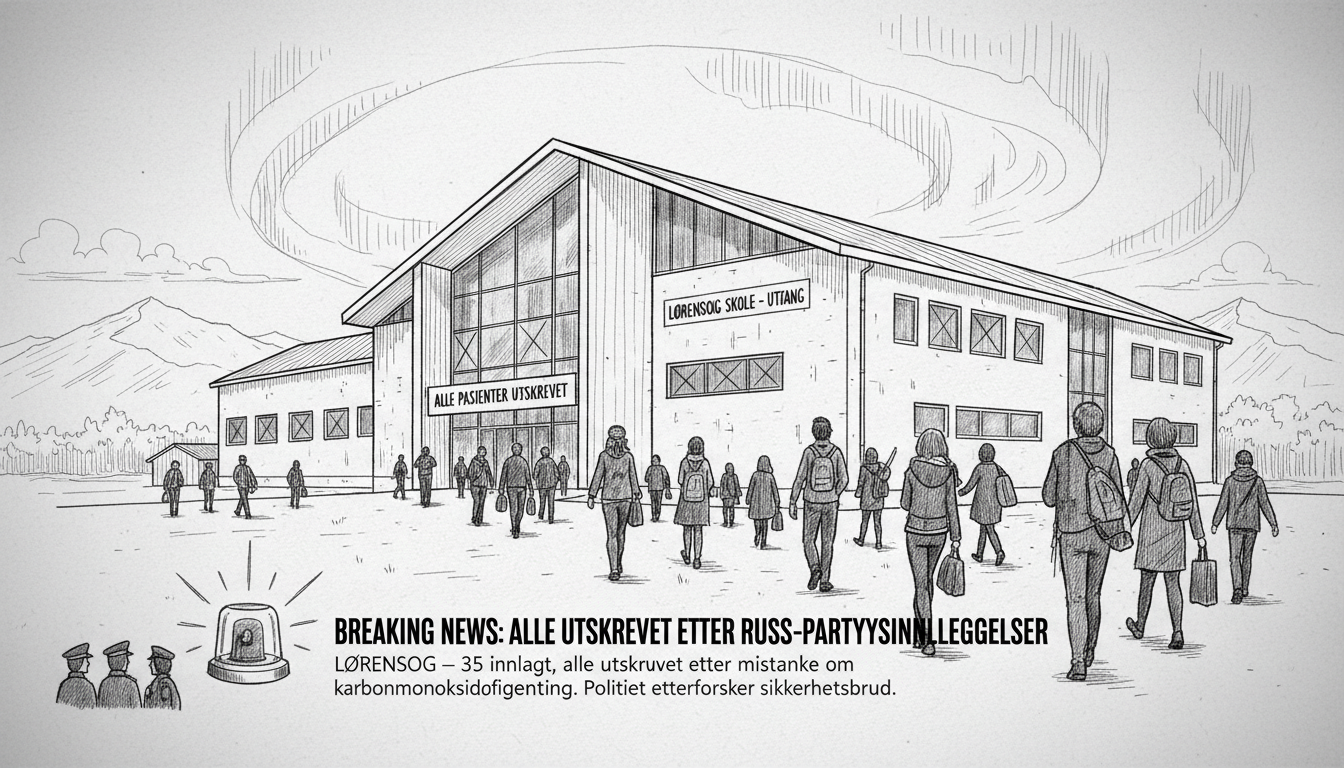All 35 people hospitalized following a high school graduation celebration in Lørenskog have been discharged from medical care. The incident occurred during a party attended by approximately 400 students on Friday evening.
Police have launched an investigation into potential violations of fire and explosion protection regulations. Officials confirmed the venue owner, generator owner, and event organizer have been designated as suspects in the case. This status indicates police have reasonable grounds to believe they may have committed punishable offenses.
According to witness accounts, multiple attendees became ill and experienced vomiting after the celebration. Dozens required medical attention for suspected carbon monoxide poisoning. Police emphasized they have no information suggesting anyone suffered serious injuries from the exposure.
The investigation continues this week with planned interrogations and forensic examinations of both the venue and equipment. Star Palace, the party location, has been officially designated as a crime scene and remains closed to the public.
A concerning aspect emerged when police revealed emergency services received no direct notifications about the incident. Authorities first learned about the situation through media reports throughout the day following the event. This communication gap raises questions about emergency response protocols for large private events.
High school graduation celebrations in Norway, known as 'russefeiring,' represent a traditional rite of passage for students completing secondary education. These celebrations typically involve weeks of parties and events during spring. While most celebrations proceed without incident, this case highlights potential safety risks when large gatherings involve temporary infrastructure like generators.
Norwegian authorities maintain strict regulations regarding event safety, particularly concerning ventilation and combustion equipment in enclosed spaces. Carbon monoxide poisoning presents a serious risk in poorly ventilated areas with operating generators or heating systems. The colorless, odorless gas can cause severe illness or death without proper detection systems.
This incident follows similar safety concerns at large youth events across Scandinavia. Just last year, Swedish authorities investigated several party incidents involving mass intoxication from unknown substances. The pattern suggests a need for improved safety oversight at private venues hosting major youth events.
The police investigation will likely focus on whether proper safety protocols were followed regarding generator placement and ventilation. Norwegian law holds event organizers responsible for participant safety, with potential penalties for negligence leading to health risks.
International readers should note that Nordic countries typically maintain high safety standards for public events. This case represents an exception rather than the norm for organized gatherings in the region. The thorough police response demonstrates Norway's commitment to enforcing safety regulations.
What remains unclear is why so many attendees required hospitalization for carbon monoxide exposure before anyone alerted emergency services. This delay in reporting suggests either a lack of awareness about the seriousness of symptoms or concerns about potential consequences for party organizers.
The case continues developing as police conduct their technical investigation of the venue and equipment. Further updates are expected as investigators complete interviews and forensic analysis.

